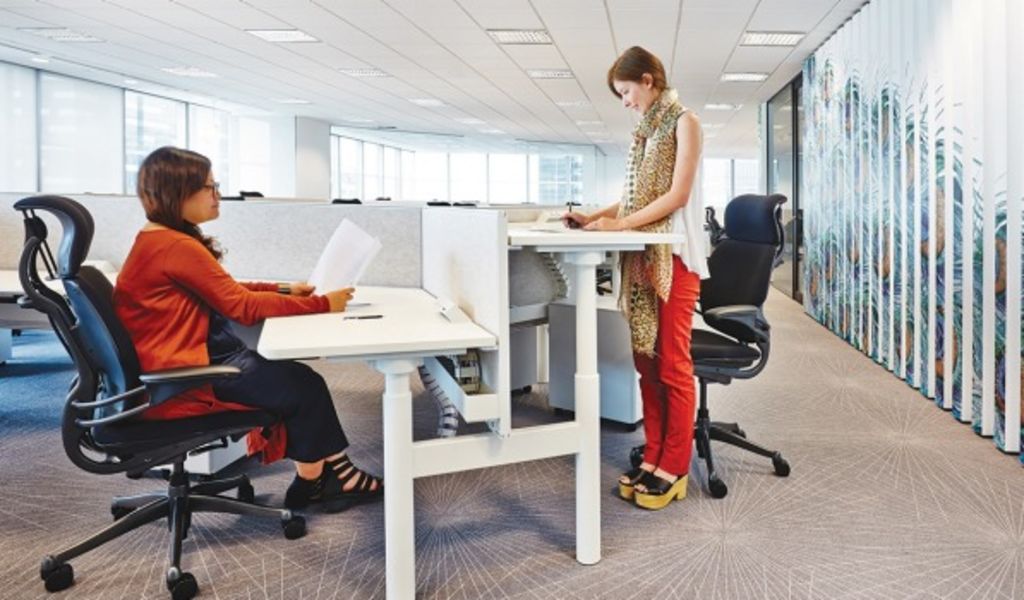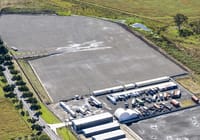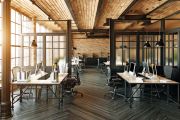
Should you sit at work - or stand?
Unsure whether to use a sitting or standing desk at work? You’re not alone – not even the experts can tell you the best way to spend your hours in the office.
There needs to be a better option for sedentary Australian office workers, who are estimated to spend more than 70 per cent of their working day sitting. Diabetes, heart disease and cancer are some of the risks that rise in people with inactive lifestyles.
Apple chief executive Tim Cook last year invoked doctors to declare that sitting was “the new cancer”. Of course, he was trying at the time to sell the Apple Watch – which pings you on the wrist to get active – so he has a blatant interest in calling time on planting the posterior.
But prolonged standing isn’t all it’s cracked up to be, either. Depending on what you read, it can lead to a smorgasbord of ailments such as back pain, varicose veins, increased stroke risk and problems during pregnancy. Oh, and your feet can hurt, too.
Four hours of movement
People are confused, says Brett Pollard, design firm Hassell’s head of knowledge and sustainability. He’s just authored a research paper looking at the issue and says movement is necessary – up to four hours a day – to prevent long-term health consequences from sitting still in the office.
“There is a lack of firm guidance,” he says. “Sitting all day has its problems. Standing all day has health issues. The latest information from ergonomic experts is continued movement during the course of the day, going from sitting to standing, combined with walking.”
So you can pretty much define your own reality about what works in the workplace. Just make sure you move. Even if you ride to work in your sleekest lycra, or bounce like a bunny in the gym at the start of the day, you still have to move, Pollard says.
“Just going for a jog at lunch, or going to the gym before work isn’t enough to counter the impact of sitting all day,” he warns.
All this matters to employers. ‘Wellness’, a concept Mirvac and Lendlease are testing, is going to become big business.
“It’s quite a fundamental change,” says workplace consultant James Calder. “It’s tied to flexible working arrangements and the ability to move to a position of trust with your employees. That management style changes.”
When Lendlease moves 2000 staff into new offices at Sydney’s Barangaroo this year, it will tackle the movement challenge with facilities that promote standing, sitting and walking – even within meetings – says group head of sustainability Geoff Dutaillis.
“We have simple diagrams around the office describing what your ideal day may look like, including eating properly, sleeping properly, not sitting for too long,” he says.”Walking meetings come into that, as does taking breaks – where you get to reset your thinking for the rest of the day.”
But back to the desks. Before 2008, corporate clients hardly ordered them, says furniture and design company Schiavello International.
“No one was ordering them for health and wellbeing,” says director Anton Schiavello.
Since 2013, however, about 30 per cent of new orders are for sit-to-stand desks.
Beware the cycling desk and smart watch
Of course, in a world in which employers will spend large sums of money on the next new thing, Pollard warns against some touted cures for workplace movement, like cycling desks and treadmill desks.
“They’re a fad,” he says. “There are better ways to encourage movement.”
Pollard also warns about supposed easy remedies like the Apple Watch. While a pinging wearable can help, it can also hinder, as once interrupted, it takes a person an average 23 minutes to concentrate again.
Movement is crucial, but it needs to be done “while making sure you’re still productive and are not becoming unnecessarily distracted,” he says.
In other words, movement in the office has to be balanced.











